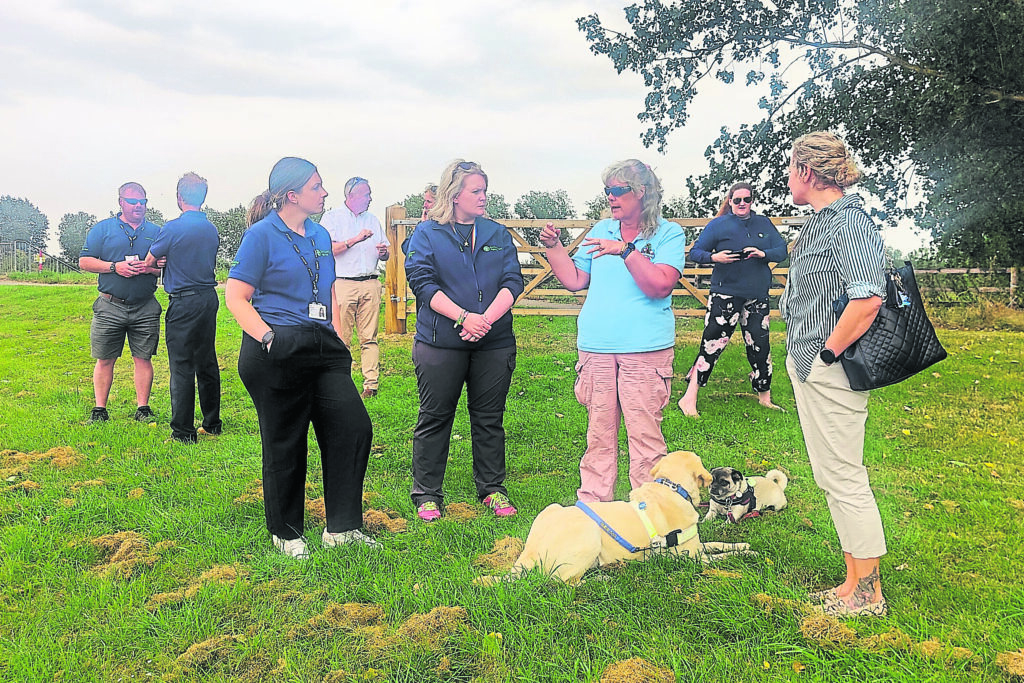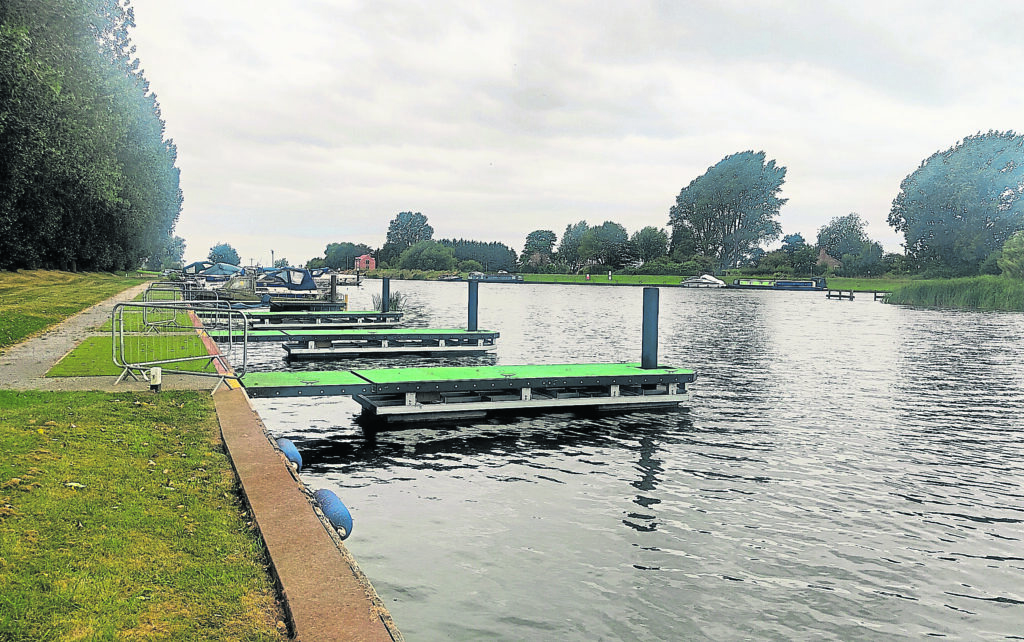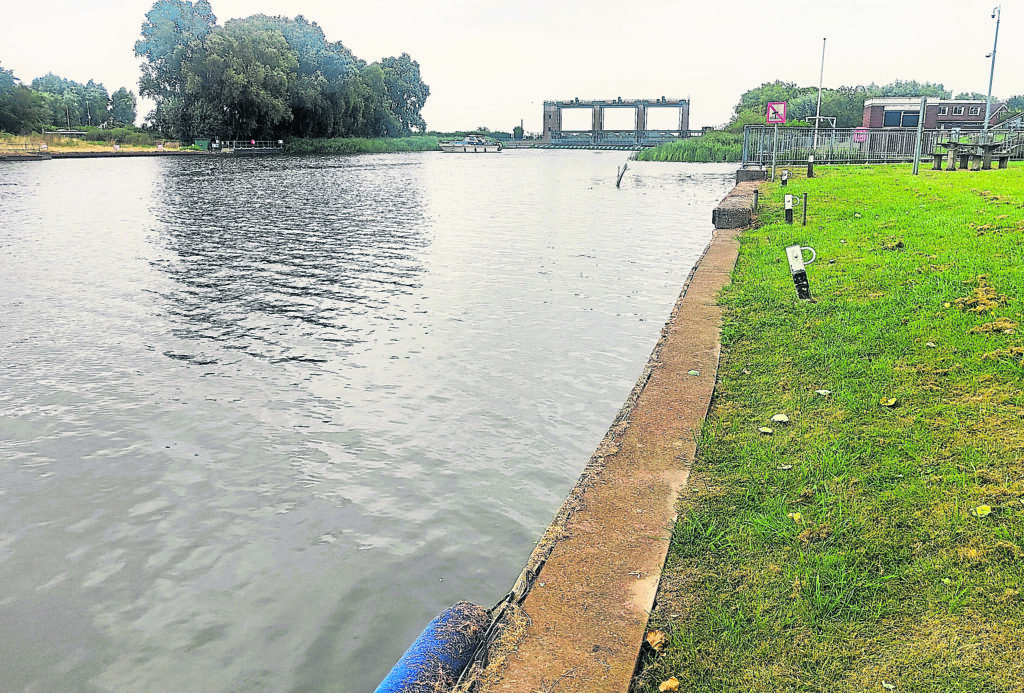Lucy Wood reports…
Campaigners championing accessibility on the UK’s waterways said a meeting with the Environment Agency to discuss moorings and facilities was ‘impressive’ and ‘refreshing’.
TRACEY and Tim Clarke, founders of the Accessible Waterways Association, were invited to the Denver Complex on the River Great Ouse Relief Channel, near Downham Market, Norfolk, to explore how the EA is aiming to extend and develop its existing moorings there to include several designated as accessible on both banks of the water.

They and EA officials discussed the options being looked at. “One idea that really impressed us is that of movable railings,” said Tracey. “This would be a system of portable railings that could be taken from site to site and installed upon request, according to the needs of individual boaters. They would be invaluable to many boaters who experience difficulties with unprotected edges (for example, perhaps those with balance or co-ordination challenges).
“This is yet to be explored more fully, but we are hugely encouraged by the EA’s forward thinking on this. Practicalities will need to be balanced, but we discussed the possible options of these being either pre-installed by EA staff at a booked mooring upon request, or perhaps a set of railings being available to hire and then installed by the boater themselves (or a crewmate) at each mooring (where fixings are available) as needed. This would be dependent upon the means of fixing and installing.

“It really is just an idea at the moment, but a very good idea, in our opinion.”
The representatives expressed a particular interest in the AWA’s free Boaters’ Blue Card scheme, which signposts that there may be people on board a boat with a disability. Tracey is now compiling an information pack and education campaign for all lock keepers, volunteers and staff on the country’s waterways.
Accessible mooring bollard
Also discussed at length was the design for an accessible mooring bollard being developed by the AWA and Canal & River Trust. It is designed to be easier to use, especially from a seated position on a boat; it is larger and brighter than existing bollards, which is vital for those with poor eyesight and helps to avoid trip hazards, too. It is envisaged that they will be installed at the CRT’s designated accessible moorings spaces with clear signage, which will encourage others to leave spaces for those who need them. Unlike short bollards or rings, the thin neck design allows ropes to be easily thrown from boats.
“The consensus of opinion is that this is very appealing and workable,” said Tracey. “If these bollards are incorporated into the planned mooring areas, then the Denver Complex would prove an excellent test site for the beginning of a nationwide roll-out of the project.

“Part of our aim is to roll this out as a national standard across all of the UK’s inland waterways, regardless of which authority looks after it. Maybe it could also become a standard in our coastal harbours too.
“Of course, all of this is dependent upon funding, and nobody has yet found a magic money tree. But the EA has a positive attitude towards this and talk of ‘where there is a will, there is a way.’ It fully acknowledges the absolutely obligatory need to make its sites as accessible as possible for everybody equally.”
Equal access for everyone
As reported in September’s Towpath Talk, the AWA is calling on waterways bodies to put equal access for everyone at the top of their agendas.
“The day was refreshing in the sense that we were actively invited, our input was sought, and our thoughts and ideas were enthusiastically welcomed,” Tracey added.
“We had good conversations about the whole topic of accessibility of our waterways, what AWA is all about, and what EA wants to be able to achieve. We are impressed and greatly encouraged by the EA’s ideas and ambitions with regard to accessibility.”
An Environment Agency spokesperson said: “We recognise that improving accessibility is not just about enhancing the experience for our current customers, including those with disabilities, but also about attracting new users and benefiting other groups, such as families with young children. One of the exciting initiatives discussed includes the creation of accessible access points and pontoon spaces for both residential and short-term stay moorings on designated sites.
“We are optimistic about the future and making progress on this important project. We look forward to continuing our work in collaboration with AWA and other partners to make our waterways more accessible.”
The EA said it is also committed to improving signage to better promote accessibility. Read more at https://tinyurl.com/AWAdenver
The AWA’s Accessible Waterways Day is being held in London on October 5, an informal event for people who enjoy inland waterways featuring exhibitor stands and more. Admission is free between 10.30am and 6pm at UCL East, by the Olympic Park in Stratford. Visit www.awa-uk.org.uk/accessible-waterways-day-london-2024/ for more information.





